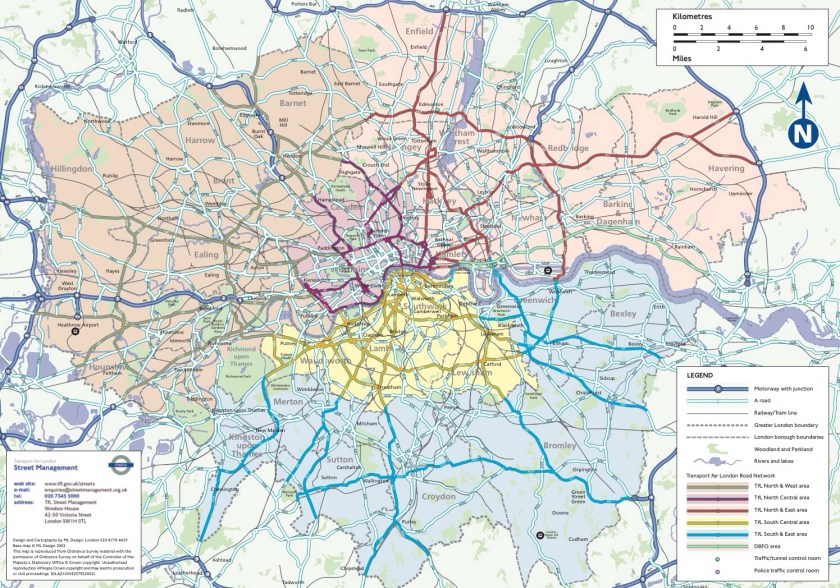The Government’s goal remains as per Philip Hammond’s 22 November 2017 Autumn budget statement:
“So today we set out an ambitious plan to tackle the housing challenge.
Over the next five years we will commit a total of at least £44 billion of capital funding, loans and guarantees to support our housing market.
To boost the supply of skills, resources, and building land.
And to create the financial incentives necessary to deliver 300,000 net additional homes a year on average by the mid-2020s.”
Will that number be reached? What pressure will the Government be under from its supporters, at next week’s party conference and subsequently, to resile from that 300,000 target in the light of the Office of National Statistics’ statistical bulletin, household projections in England published this month?
After topdown targets for individual authorities, derived from regional plans directly overseen by government, were abolished by the incoming 2010 coalition government, the 2012 NPPF has required each local authority to work out for itself, without any centrally prescribed methodology, what the objectively assessed need for housing is in its area. That quickly proved to be a recipe for complexity, uncertainty, local politicking and delay.
So the Government has been trying since 2015 to arrive out how to arrive at a simpler system that isn’t seen as centrally prescribed. As set out in my 20 September 2017 blog post Housing Needs: Assessed Or Assumed?, the Government decided to consult on a new “standard method” which would provide authorities with a minimum figure, desired from a formula based on household projections, local affordability and a cap on the extent of any increase deriving from the new formula.
Alongside its 14 September 2017 consultation document it published a spreadsheet showing “indicative” figures that would result for each authority from the new method, draft figures which it warned should be “treated with caution“. The total number totted up to 266,000 – a number that made the 300,000 look like a decent stretch target.
All admirably transparent and fascinating at the time, but surely in retrospect it was not helpful to publish those figures, particularly given that it was also stated that the new standard method would apply to local plans that weren’t submitted for examination by the later of 31 March 2018 and publication of the new NPPF?
Numbers drive actions. For some authorities there was clearly an immediate incentive to rush to submit their plan before the standard method was imposed, for others quite the reverse. We have seen corners cut by some authorities in their haste and the position became even more confused once (1) the possible 31 March 2018 deadline became, once the new NPPF was published containing a six months’ grace period, 24 January 2019 and (2) it became clearer that the figures and methodology were liable to change in any event.
The numbers were always likely to change given that the September 2017 household formation projections were arrived at by MHCLG using date going back to 1971 and the task for arriving at the final numbers was to be given to the Office of National Statistics, who would use the 2016-based population projections published in May 2018. When the ONS published its proposed methodology in June 2018 it became clear that ONS would only use trends in household formation back to 2001. Lichfields were expressing concerns about the likely consequences in a 27 June 2018 blog post:
“We know that in the decade 2001-11 housebuilding fell to its lowest level and household formation amongst young adults changed significantly. If the new household projections only draw upon this (relatively) short term trend for projecting future household growth, is there a significant risk of ‘baking-in’ trends which are not reflective of future ‘need’ but simply an illustration of what the number would be if we continued more of what has been before?
ONS had consulted on its approach in 2017, and many respondents (including Lichfields) pointed out the need for the methodology to reflect not just a ‘purist’ demographic approach, but reflect on the real-world implications for housing need. Suggestions were made that ONS might wish to consider producing local ‘variant’ projections (as DCLG used to do at a national level) with modified formation rates as the basis for the standard methodology. It does not appear ONS intends to follow this advice.”
To be fair, the Government was not blind to what was likely to happen. As I set out in my 5 August 2018 blog post Housing Needs, Housing Shortfalls, when it published the final version of the NPPF on 24 July 2018, it published on the same dayits response document to the consultation on the draft, with this passage:
“A number of responses to this question provided comment on the proposed local housing need method. The government is aware that lower than previously forecast population projections have an impact on the outputs associated with the method. Specifically it is noted that the revised projections are likely to result in the minimum need numbers generated by the method being subject to a significant reduction, once the relevant household projection figures are released in September 2018.
In the housing white paper the government was clear that reforms set out (which included the introduction of a standard method for assessing housing need) should lead to more homes being built. In order to ensure that the outputs associated with the method are consistent with this, we will consider adjusting the method after the household projections are released in September 2018. We will consult on the specific details of any change at that time.
It should be noted that the intention is to consider adjusting the method to ensure that the starting point in the plan-making process is consistent in aggregate with the proposals in Planning for the right homes in the right places consultation and continues to be consistent with ensuring that 300,000 homes are built per year by the mid 2020s.”
So, as at July the position was that updated household projection figures would be released in September and the Government would then “consider adjusting the method after the household projections” and would “consult on the specific details of any change at that time.”
The updated figures were indeed then published, on 20 September, and show significant downward movements in the projections for individual authorities and an overall decrease in the total required, from 266,000 to 213,000. There has been a quick succession of excellent blog posts from planning consultancies, going into the statistical detail and likely implications, including (with apologies to those I don’t mention) Bidwells, Barton Willmore, Turley and Lichfields. There have inevitably also been many calls from objectors to housing numbers within emerging local plans for those numbers to be reviewed in the light of the new figures.
But the goalposts haven’t moved (yet). I assume that the Government will now indeed consult on changes to the standard method to increase numbers back within spitting distance of the 300k. There is surely no point in any authority taking any steps in reliance on the September 2018 ONS figures, but then again the September 2017 MHCLG figures have a large question mark against them. If you are an authority looking to make progress with your plan with a view to submission after 24 January 2019 you really have very little to go on as to the approach to be adopted.
So it is urgent that the Government consults as to proposed changes to its methodology and what that is likely to mean for individual authorities – although that consultation paper is going to end up running very close up to the 24 January 2019 date, leaving very little time for, er, planning.
Furthermore, I’m not sure that the ONS numbers are going to be standing still. As Planning magazine have identified in their useful coverage of the new numbers, ONS’ analysis that accompanies their figures makes it clear that it is aware of some of the deficiencies in the data. It refers to responses to consultation on its proposed methodology:
“There was a view that only using the 2001 and 2011 Censuses would result in a downward trend in household formation for the younger age groups, which in turn would downplay the need for housing for younger people. With these views in mind, Section 8 shows the results of sensitivity analysis in which 2014-based HRRs (projected using 1971 to 2011 Census data) are applied to the 2016-based subnational population projections (SNPPs), should users wish to investigate the impact of the change of HRR methodology on the household projections.”
ONS is also “planning to publish a set of variant 2016-based household projections in which household formation rates for younger adults (those aged 25 to 44 years) are higher – provisionally scheduled for 3 December 2018. The purpose of this variant would be to illustrate the uncertainty in the projections around the future household formation patterns of this age group.”
You numbers people will know better than me whether this is also likely to have an appreciable effect on the numbers, at least in some areas.
But it does seem odd that in order to gauge the level of housing need, in order finally to look to put right the increasing shortage and unaffordability of housing, the starting point has been to look at the rate at which people have been able to form households in particular areas, during that very period where lack of supply and high prices have led to them sharing with others or not moving from the parental home – or, in areas of particularly high demand and/or restraint, not having a hope of living near their family or job (or the job that they would seek were suitable affordable accommodation available).
There is now the dilemma at a national level that echoes the dilemma that local plan inspectors have had to grapple with at an individual authority level: whether to accept a coarse, hypothetical approach that can be implemented with relative ease or whether to insist on getting to a “pure” statistical answer. The latter may in my view be unrealistic: we need targets, with consequences if they are not met and we need to avoid giving convenient excuses for delay. Those targets need to be based on the best evidence but are ultimately political choices where national leadership is essential – this is not a local issue where individual authorities can operate without regard for wider consequences.
I would be disappointed if the Government, faced in any event with the prospect of not meeting its current target (which conveniently is expressed in any event by reference to a time frame, the “mid-2020s“, that takes it past the next election), were to see this current position, which should be a surprise to no-one, as an excuse to retreat from the 300k commitment. But they won’t get an easy ride from some I’m sure.
Simon Ricketts, 29 September 2018
Personal views, et cetera






